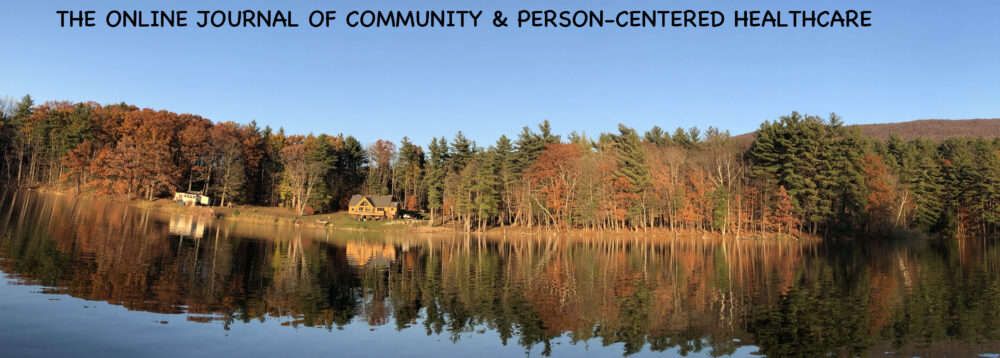Ali Mahmoud1, BS, Shahzeb Hassan1, BA, Taha Osman Mohammed1, BS Leonard Hoenig2, MD
Affiliations:
1. Northwestern University Feinberg School of Medicine, Chicago, Illinois
2. Private Practice, Pembroke Pines, Florida
Corresponding Author:
Leonard J. Hoenig, MD
gooddocljh@gmail.com
Conflicts of Interest Statement: There
are NO conflicts of interest.
Key Words: Hiroshima, Sankichi Toge, poetry
ABSTRACT
“A Monument in Hiroshima,” Japan (Figure) is dedicated to Sankichi Toge (1917-1953) a survivor of the atomic bomb blasts which occurred 75 years ago. Toge was a poet who became the voice of the atomic bomb survivors. This article presents highlights from Toge’s poetry that capture his vision of peace and a world free of nuclear weapons.
***
In Hiroshima sits a simple monument (Figure), rectangular in shape. It is a special memorial dedicated to Sankichi Toge (1917-1953) who survived the atomic blast that destroyed Hiroshima during World War II. From the bombing, Toge suffered cuts from shards of glass and several months of radiation sickness. This year marks the 75th anniversary of the bomb dropped on Hiroshima. Tōge and his writings aim to serve as a reminder of the true costs of nuclear war during these times of careless threats and foul play

The other side is in Japanese.
Reproduced with permission of the Hiroshima Peace Memorial Museum
Sankichi Toge was a poet who became the voice of Hiroshima and Nagasaki’s atomic bomb survivors. They are the “hibakusha” (Japanese for “bomb-affected-people). Toge is most remembered for his 1951 book: Poems of the Atomic Bomb.
Toge was faced with a poet’s dilemma. Can any verse truly capture the horrors of nuclear war? How does one phrase an enduring message for humanity? To solve these challenges, Toge abandoned the “tanka” or “haiku” formats of traditional Japanese poetry that he had always used. Instead he decided to experiment with a new literary form of “free verse” poetry in which there are no specified number of lines and the lines have no specified length (1). One example is his poem Dying which tells the story of a person dying from the bomb in which the poetic lines themselves end in a death spiral. Here are the poem’s final verses (1):
Burning body,
scalding throat
arm
that suddenly collapses;
shoulder
that sinks to the ground.
oh, I can go
no farther.
In the lonely dark,
the thunder in my ears fades.
Ah!
Why?
Why here
by the side of the road
cut off, dear, from you
why
must
I
die
?
Another literary technique Toge uses for his atomic bomb poetry is to open the poem with a dramatic word that captures the reader’s imagination. Thus, in the his poem Shadow (1), Toge describes the “shadows” left by the very essence of human bodies being etched onto the sides of buildings and the steps of stairs by those close enough to the bomb when it dropped:

“a flash of tens of thousands of degrees
suddenly branded someone’s loins
on thick slabs of granite”
“near where the people of the city come and go|
with goodness and pity but entirely indifferent
bleached by the sun, hit by the rain, buried in the dust
growing fainter with each passing year, that shadow.”
Toge reminds those who pass by what looks like a simple shadow was in fact a human being each with their own story, their own lives, and their own families before there was nothing left of them but their own shadow.
Toge’s poems stand out for another reason. He never mentions his American assailants by name. Not a single mention of the United States or America comes up in his poetry, as illustrated by the following verse from his poem When Will That Day Come(1)
Ah, that was no accident, no act of God.
After precision planning, with insatiable ambition,
humanity’s first atomic bomb
was dropped, in a single flash,
on the archipelago in the eastern sea, on the Japanese people;
you were killed,
one of 400,000 victims who died horrible deaths.
By holding back the huge temptation of pointing fingers, Tōge instead decided to keep his poetry generalizable to dangers of nuclear war. Watch USA online porn https://mat6tube.com teens, milfs, matures! He does this in order to prevent the coming generations from overlooking the bombings as being an isolated incidence of the U.S, abusing its power but rather a mask of destruction that anyone can wear if they so choose.
In 1938, Toge was incorrectly diagnosed as having tuberculosis. He suffered from coughing, phlegm and episodes of hemoptysis. He was always sickly. Ten years later, the correct diagnosis was made; that he suffered from bronchiectasis. The hemoptysis worsened, and on March 9, 1953 he underwent surgery but died in the operating room.
The monument in Hiroshima, dedicated to Sankichi Toge, was completed on August 6, 1963. Engraved on this memorial, in both Japanese and English, is Toge’s poem Give Back The Human. The English translation is by Miyao Ohara. Toge’s final message to us is not just a warning about the dangers of nuclear weapons. It is also a message of hope; a hope that people can learn to coexist in peace. It is also a prayer that no future generation will endure the curse of nuclear war. 75 years after the atomic bombings of Hiroshima and Nagasaki, we remember its many victims through Toge’s inspiring words:
Give Back the Human
Give back my father, give back my mother;
Give back my grandpa, grandma back;
Give my sons and daughters back.
Give me back myself.
Give back the human race.
As long as this life lasts, this life,
Give back peace
That will never end.
References
1. Minear RH (Translator). Hiroshima: Three Witnesses. (Minear RH, ed.). Princeton University Press; 1990. doi:10.2307/j.ctv346qxq
Legend For Figure
Monument in Hiroshima Dedicate to Sankichi Toge. Reproduced with permission of the Hiroshima Peace Memorial Museum.
The image, Nuclear Shadow can be found at: https://www.reddit.com/r/creepy/comments/6axk2m/nuclear_shadow_hiroshima/ [Although the link attributes this image to Hiroshima, in reality it is from Nagasaki.]
